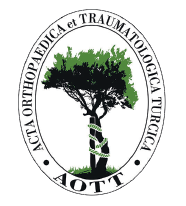Objective: The primary objective was to evaluate the predictive value of serum albumin levels for long-term functional recovery after hip fracture surgery.
Methods: Data from a university hospital’s Fracture Liaison Service Registry (2016-2021) were retrospectively analyzed. Hypoalbuminemia was defined as a serum albumin level below 35 g/L upon admission, in line with established clinical thresholds from previous studies. Functional outcomes were assessed at baseline, 3 months, and 1 year after surgery using the Barthel Index to measure basic activities of daily living and the EuroQol Visual Analog Scale to assess overall health-related quality of life. Multivariate logistic regression identified risk factors for poor Barthel Index scores (<60) at 1 year postoperatively.
Results: The analysis included 1086 patients (mean age 79.9 years, 75.8% female) with a 28.9% prevalence of hypoalbuminemia (309 patients). All functional outcomes improved over the 1-year follow-up. However, in the hypoalbuminemia group, gains in quality of life plateaued after the first 3 months. Lower serum albumin and a higher comorbidity burden were associated with unfavorable long-term functional recovery. A serum albumin level below 38 g/L (identified using the Youden Index) emerged as a threshold for predicting poor outcomes with Area Under Curve of 0.62.
Conclusion: Older adults with serum albumin levels below 38 g/L may be at increased risk of poor functional recovery following hip fracture surgery. Although hypoalbuminemia is traditionally defined as levels below 35 g/L, the findings suggest that adverse outcomes may begin to emerge at slightly higher levels. Early recognition of this risk, along with timely nutritional and rehabilitative interventions around the 38 g/L threshold, may help support improved long-term outcomes and reduce post-fracture disability.
Cite this article as: Sirichativapee W, Chotiyarnwong P, Unnanuntana A, Vanitcharoenkul E. The impact of preoperative serum albumin on postoperative recovery and health-related quality of life in older hip fracture patients. Acta Orthop Traumatol Turc., Published online November 7, 2025. doi:10.5152/j.aott.2025.25253.



.png)
.png)
